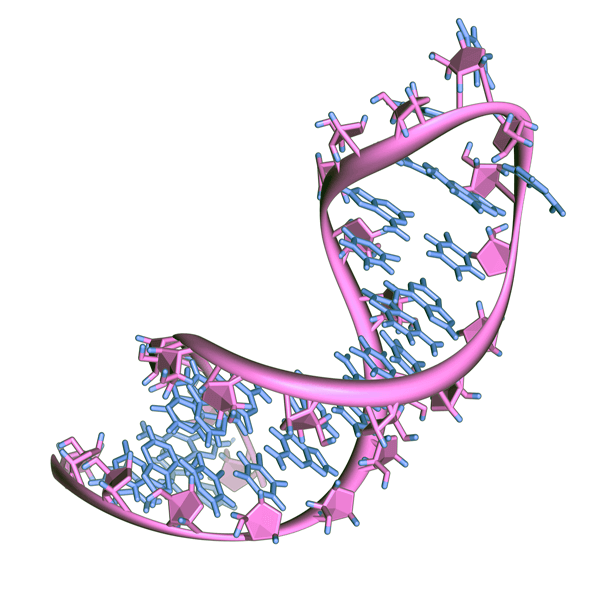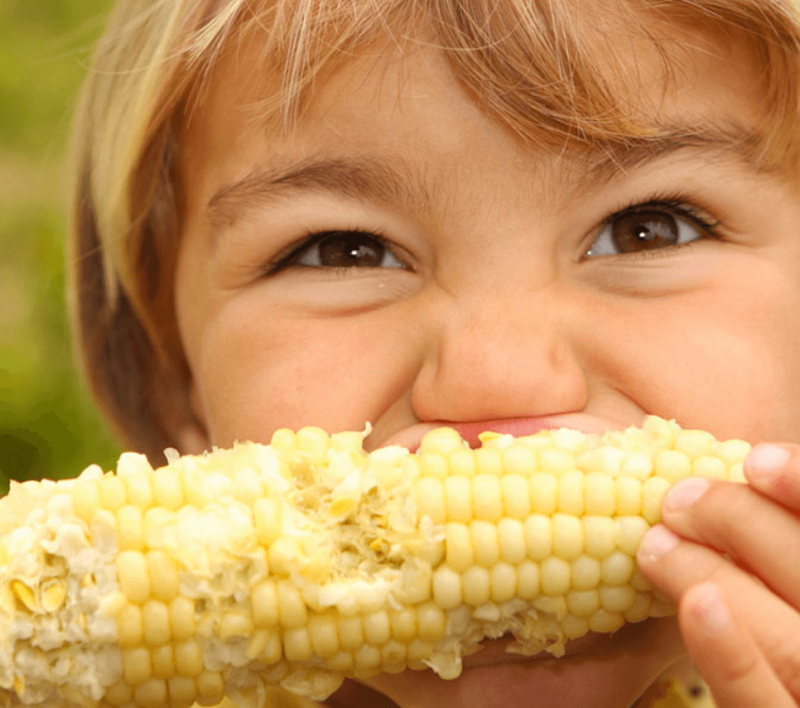As science progresses, new methods are developed to accomplish tasks. Some help medical and agricultural science work faster, others allow completely news ways of doing things. In the business of promoting new crop traits, CRISPR is one example of a revolutionary new technology that opens up new avenues. But it isn’t the only one.
In a study to be published in November in the journal Regulatory Toxicology and Pharmacology, the effects of ingesting RNA from food sources like a new breed of Monsanto’s Bt corn is tested on a mouse model in order to determine safety. This study is in direct response to claims that certain types of RNA can change the genes of those that eat it.
Before CRISPR, there was a new method called RNA interference (RNAi) that was discovered across the animal and plant kingdom as a way to control what genes are expressed. By blocking the copying and eventual protein formation from an expressed gene, the gene is essentially turned off without having to actually change any part of it.
All eukaryotes, meaning all life except bacteria and some exceptions, express RNA as a part of their genetic function. Due to this, RNA is found in copious amounts in all food we eat and have eaten for all of history. There are many different kinds of RNA, but the ones that matter for RNAi are long double-stranded RNA (dsRNA) and small RNAs like small interfering RNA (siRNA) and micro RNA (miRNA). The names just relate to how many base pairs are coded into them.
RNAi has long been used in biotechnology to help develop better crops. Virus resistance has been a hot commodity to invoke by blocking the genes and resulting proteins that the viruses would aim for. Other simpler methods include slowing down ripening and browning and reducing unhealthy byproducts. The two commercially available examples of this include the Innate Potato and the Arctic Apple.
Claims have been made before by anti-biotechnology groups that the method of RNA interference (and dsRNA specifically) will lead to gene changes somehow due to similarity with existing sequences in the human genome. The evidence for such an occurrence is slim to none and ignores the fact that there are dozens, if not hundreds, of such similar sequences in the food we eat every day in the first place.
Furthermore, there are a number of barriers to such a thing even having a chance of occurring. To enter even a single cell, the RNA would have to get through multiple cellular barriers and the several systems that work to break down things like RNA, such as lysosomes. And all that is without even considering the possibility of a sufficient quantity of RNA surviving the trip through the gastrointestinal tract, which is already a far chance at best. A single strand of RNA making it through can do nothing to the bodily systems, much like a single virulent bacteria can do nothing. Only in vast quantities can any negative effects occur and not even then when it comes to RNA.
On that note, let’s get to the actual study being discussed today. The dsRNA being tested in this experiment is from one of Monsanto’s newer types of Bt corn, which also now expresses a specific strand of RNA called DvSnf7 RNA.
One counter to the explanation above of RNA not surviving the digestive system and cellular defenses is insects, whose physiology sometimes involves acidic digestive systems, but completely differently than mammalian systems. More often than not though, they instead have partially alkaline-based digestive tracts, along with a complicated, yet simple multi-chambered gut system. Thus, a targeted strand of RNA made to be compatible with a specific gene from a specific species can have an effect, but only if all of those requirements have been met.
In this case, the target is the Galerucinae subfamily of beetles and it is already known that the targeted RNA has no effect on insects outside this group. The researchers involved in the study wanted to show that this dsRNA can have no effect on mammals as well, even if there is gene similarity between them. The mouse model used has a number of unique RNAs that match up with rats and humans and with the RNA produced by the corn, thus a safety study done with this model will represent the effects, if any, in humans from consumption.

The toxicity was assessed over a period of 28 days with a repeated dosage of the RNA daily, in different amounts depending on the experimental group. One group was fed 1 mg, the next 10 mgs, and the last 100 mgs over the time period. Any changes to health or genetic expression would be represented over such a time period, especially with a dosage millions (and billions for the top-most) of times higher than actual exposure conditions.
There were several measurements and tests reported after the feeding period, such as average body weight, amount of mouse feed consumed over the period, physical observations of health, clinical chemistry of sodium and electrolyte levels among others, hematology (physiology of the blood), organ weights, visual examination for disease on the interior, and histopathology (biopsy of various organs and slide inspection).
For all of these tests, there was no significant differences found between the different experimental groups or in comparison with the control group. Thus, for a toxicology scale, they had the No Observed Adverse Effect Level (NOAEL) set at 100 mg, the highest amount measured.
As has been shown and presented in this study, the risk of any harm, genetic or health-wise, is non-existent when it comes to dsRNA specifically and RNA generally. The physical body mechanisms already suppress RNA from entering cells and, even if they could, there is no evidence of harm occurring from it other than in targeted methods against specific insects.
Concern and caution is useful when dealing with new science, but fear and alarm when there is little to no evidence for it is not beneficial. The best option when there is uncertainty about the safety of a technology is to research more and conduct safety studies. Just like this one.
This article appeared originally on the site A Science Enthusiast under the title Debunking Pseudoscientists: RNA From Food Can’t Change Your Genes and is being reproduced here with permission of the author.
Sterling Ericsson is a biology-focused writer with a bachelor’s degree in Molecular and Cellular Biology from Texas A&M University. He writes for the blog Bioscription and also posts articles for the website A Science Enthusiast. He can be found on Twitter @SterlingEricson or @bioscription































